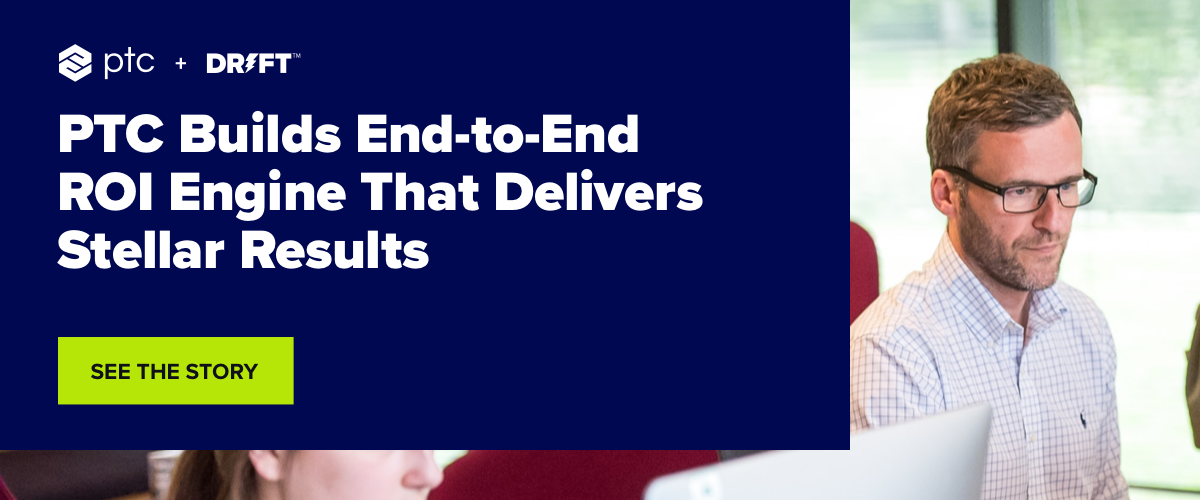Ask any marketer the most important metric they’re chasing and they’ll tell you about traffic or leads.
Ask any sales rep and they’ll say bookings and SQLs.
Customer success? They’re worried about NPS scores and turnaround times.
Peel back those metrics and you’ll see it comes down to one thing: accelerating revenue.
Too often, though, marketing, sales, and customer success all work in completely separate silos, throwing leads over the fence and hoping for the best. When revenue teams work together as one – and “customer centricity” becomes a way of life, instead of a buzzword – something magical happens.
Making Customer-centric More Than a Buzzword
Research from McKinsey shows that tech alone won’t help you drive more revenue. You need to combine technology with a human touch. You need:
- Transparency
- Expertise
- Speed
Decision-makers value these the most. If you can do all three of these, you’ll meet the buyer where they are, delivering a frictionless, delightful experience.
That’s the dream, right?
But actually, becoming more transparent, showing off your expertise, and speeding up your operations? That’s more difficult.
You need to get conversational.
It’s time marketers and sellers engage with buyers and customers in a new way.
Accelerate Revenue with Conversational Marketing and Conversational Sales
Are you making it easy for your customers to buy from you?
It’s no longer about executing a sales process that makes them do what you want. If you want to accelerate your revenue, you need to make the experience as easy as possible, with you as their trusted advisor.
Asking your prospects to fill out a form won’t get you to closed deals.
Using a chatbot won’t get you to closed-won.
Having a conversation? Now we’re talking.
“It used to take a lot of steps to talk to a human, or it was clunky – your experience of talking to or scheduling time with a human was less than ideal. We sought to streamline and remove friction from the buying experience so that a site visitor could talk to a human and get what they needed faster.”
There are two ways to do this:
- Conversational Marketing is the fastest way to move buyers through your marketing and sales funnels through the power of real-time conversations. It builds relationships and creates authentic experiences with customers and buyers.
- Conversational Sales gives your sales team a healthy pipeline of qualified opportunities and the real-time visibility, insights, and communication channels they need to prioritize target accounts, be more productive and win more business, faster.
Becoming customer-centric isn’t just about changing your website or billing processes (though that’s a good idea, too). The more you help your customer become successful, the more trust and credibility you’ll build. Focusing on their success naturally helps drive more sales for your business – while building a relationship with customers that lasts.
Combining these two strategies adds up to Revenue Acceleration. Revenue Acceleration unifies your marketing and sales teams to engage customers how and when they want to engage. These three pillars make it happen:
1. Transparency: Identify Known and Unknown Audiences
Who is coming to your website?
I’m not talking about the average traffic. I want to know who your ideal customers are, and when they’re coming to the site.
Modern buyers complete 57% of their purchase decision before talking to a sales rep. They’re reading your blogs, checking out your feature pages, and poring over your pricing options.
It’s one of the foundations of marketing and sales for a reason: know your audience. And that means knowing exactly who they are and what they care about when they engage with you.
Where they show up may have changed, but understanding them hasn’t. All sales are built on understanding. What are the pain points? Their goals? How does it all match up with your offerings?
You need to know as soon as someone arrives on your site who they are and what they’re interested in – for instance, whether they’re part of a larger buying committee one of your SDRs is already talking to, whether they had a customer support issue last month, or if they’re brand new but found you by searching for a specific term on Google.
“Before Drift, it was like being hungry, going into a restaurant and being told you have to fill out a form and the restaurant will call you at their earliest convenience. Drift has allowed us to become more customer-centric, even in the B2B space we have to solve customer problems on their time, not ours.”
Understanding who they are and where they are in the sales process forms the foundation of your conversational sales strategy. You’re not going to talk to someone who’s finalizing their list of options to take back to the team the same way as a person browsing the blog.
2. Expertise: Design Curated and Personalized Experiences
Once you know who your ideal customer is and how to identify them, design curated and personalized conversational experiences on and off your website.
No, personalization isn’t “Hi, <First Name>.”
Personalization means using the power of the data you already have access to in your marketing automation tool to change the conversation on topics or goals that most interest the audience.
You don’t have to be always-on to deliver a fantastic experience for your customers.
“Today’s B2B buyers are no longer willing to suffer through a bad customer experience. They expect a personalized, frictionless experience that is built around their needs and preferences. They want speed, convenience, and ease. This is why we have embraced Drift – because we want to deliver the kind of experience our customers want.”
⅔ of buyers prefer remote interactions or self-service options. Are you providing them?
Whether inbound or outbound, engage buyers on their channel of choice – chat, email, SMS, video, or voice. Instead of pushing buyers towards a callback, intelligent bots and workflows can engage buyers autonomously, learning about their challenges and understanding intent before passing them over to a human rep.
“Today, people are juggling personal and professional time. They no longer have the patience or time to wait around to engage with you and your brand. You need to engage with buyers when they have the time and intent to engage with you or you risk not engaging them at all and missing an opportunity to build your brand and sell your solutions.”
This is where you plant the triggers that reveal the windows into a buyer’s mind. This might be an email, an ebook, or a chatbot flow that makes them feel seen, understood, and excited by what you have to offer. It’s about delivering what they want, when they want it.
Now you can turn these dynamic experiences into action 👇
3. Speed: Meet Customers Where They Are
Your buyers today want everything and they want it now. Nearly half of all buyers expect a chatbot or live chat response within five seconds. A third expects the same via phone or sales video call.
Your sales team should be instantly notified about an engagement with a potential customer or existing customer and routing the right rep into the conversation. If they visit your pricing page, solution page, and a customer story within the span of 10 minutes, that’s a hot lead.
A blink-and-you’ll-miss-it opportunity.
“We quickly realized the value of having actual conversations with people while they were on our website – chatting with them in real-time when they were most interested in hearing from us. Eliminating the time delay between a prospect’s inquiry and our response became our guiding principle.”
By harnessing the power of AI’s speed with human expertise, you can juggle a hundred “personal” conversations all at the same time.
If you get it right, the payoff is huge.
Customer experience leaders stand to achieve revenue gains of 5-10%, while reducing customer experience program costs by 15-25% within two or three years.
That’s true whether you’re closing a six-figure deal or a four-figure one. Your buyers are comfortable with digital channels. Even though it’s conventional wisdom that a big-ticket deal means you need an in-person contact, 20% of B2B buyers are willing to spend $500,000 or more in a remote model. And 11% said they would spend over $1 million.
You have to move fast if you want to close the deal.
With AI, you can make the first move and direct the conversation. But it takes a combination of all that data and the right cadence to make the magic happen. An AI chatbot may open the door, but you’re going to have to walk through to drive the conversation forward and persuade the buyer to take the next step towards conversion.
Conversational Marketing + Conversational Sales = Revenue Acceleration
So there you have it, folks. It’s not just about chatbots anymore. 83% of global B2B leaders believe an omnichannel approach delivers more success than traditional sales models. And 64% intend to increase this sales model within their organization over the next three years to capture demand for a digital customer experience.
Chatbot software is just a tool you can use to create one of these engagements – and don’t get me wrong, it’s a really powerful one.
But to accelerate your revenue, you need a strategy that creates a conversational experience at every stage of the customer lifecycle. It’s the whole package.
What would your revenue look like if you went from a deal cycle that lasted two months to one that lasted two weeks?
Aligning your sales and marketing teams around conversations can do just that. According to a study by SiriusDecisions, companies that align their revenue teams experience 15% higher profitability and 19% faster revenue growth.
“A good relationship between marketing, sales, and customer success looks like a tried and true partnership. These teams need to stop pointing fingers and take ownership around the revenue process and their role in driving that process. They need to identify strategic gaps and help one another bridge those gaps.”
That’s the power of Conversational Sales and Conversational Marketing.











